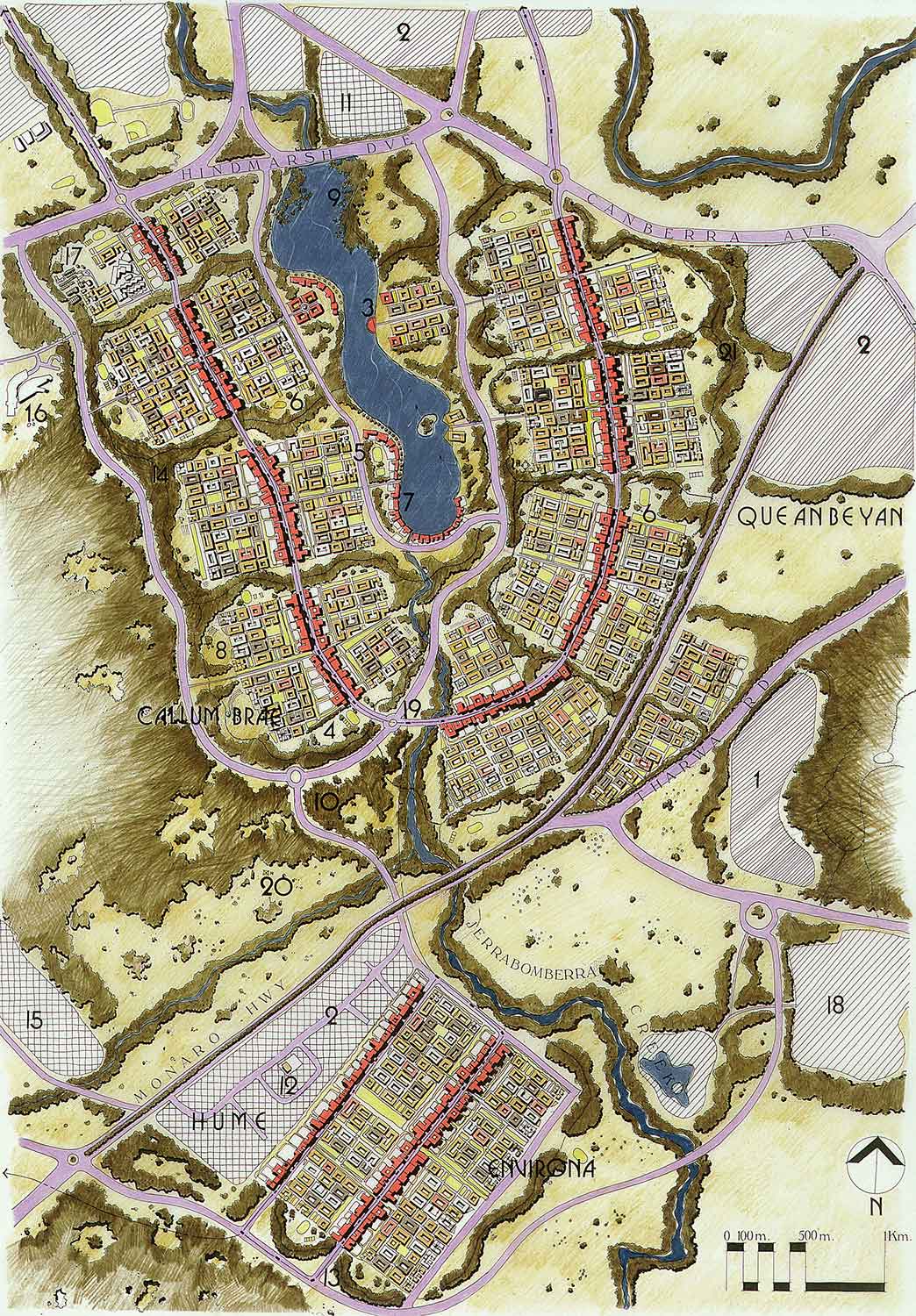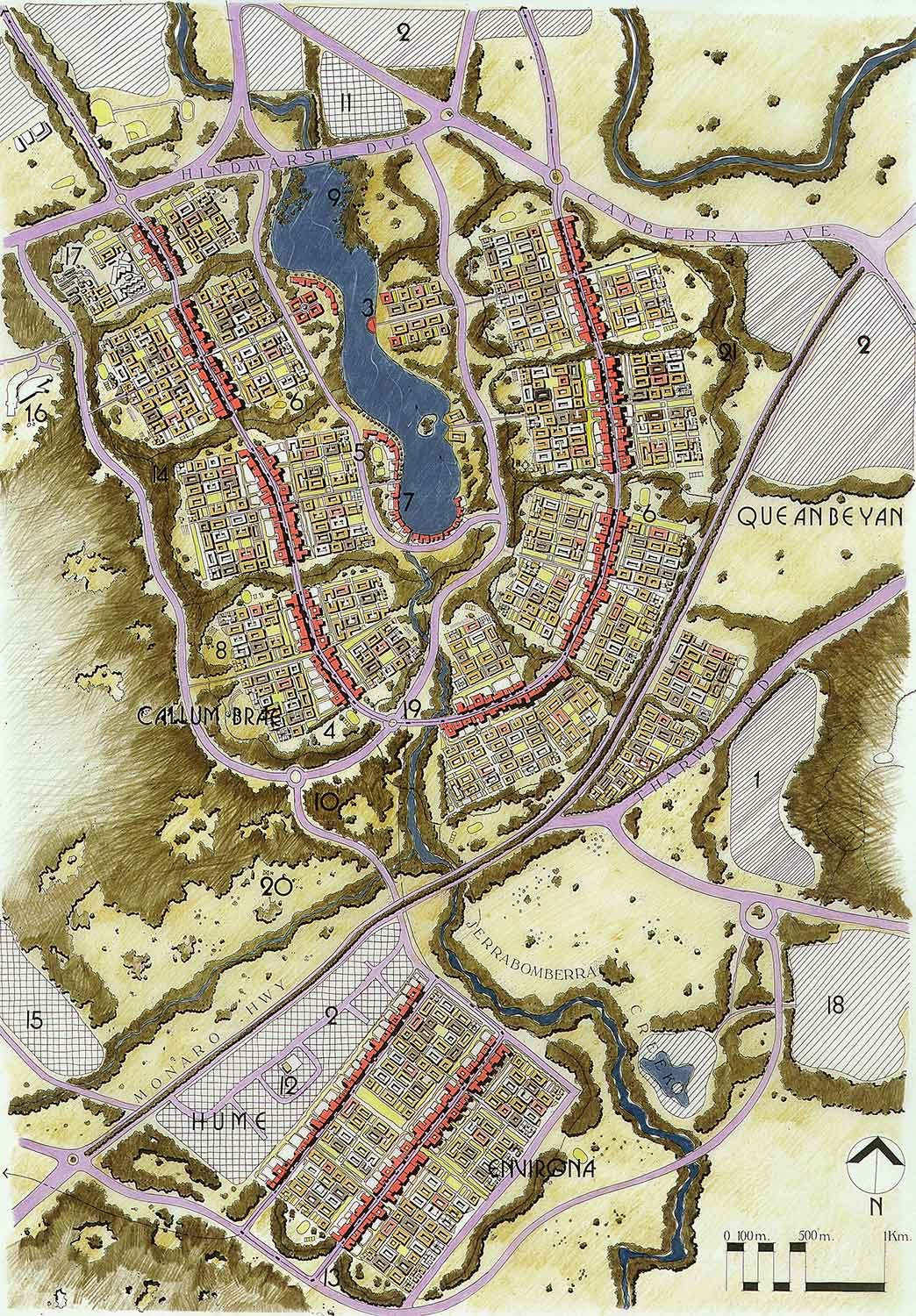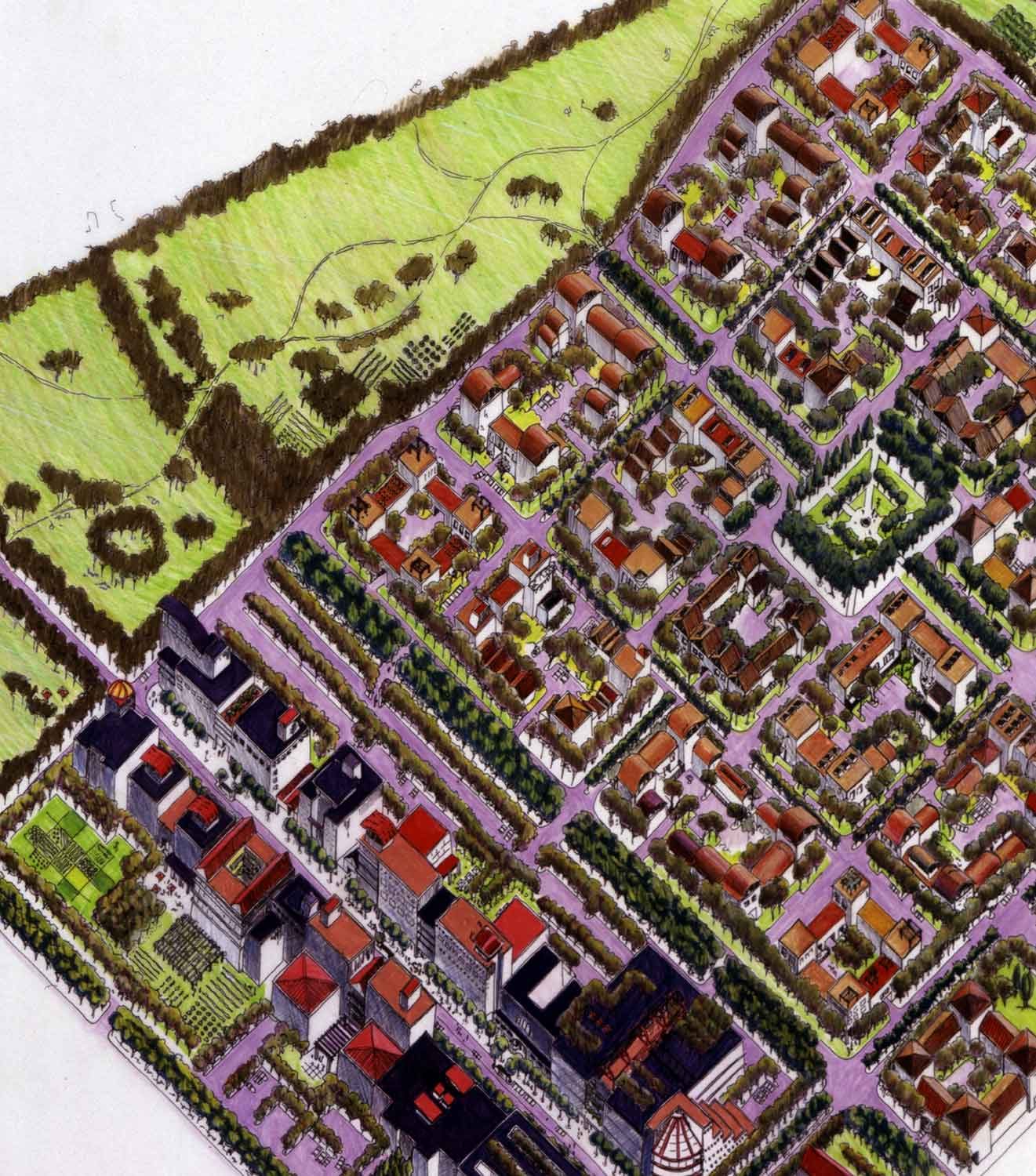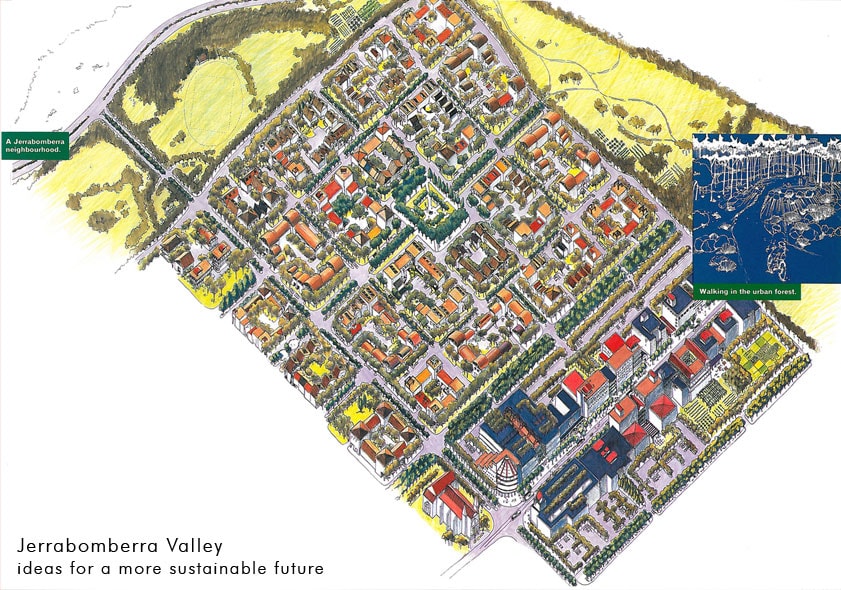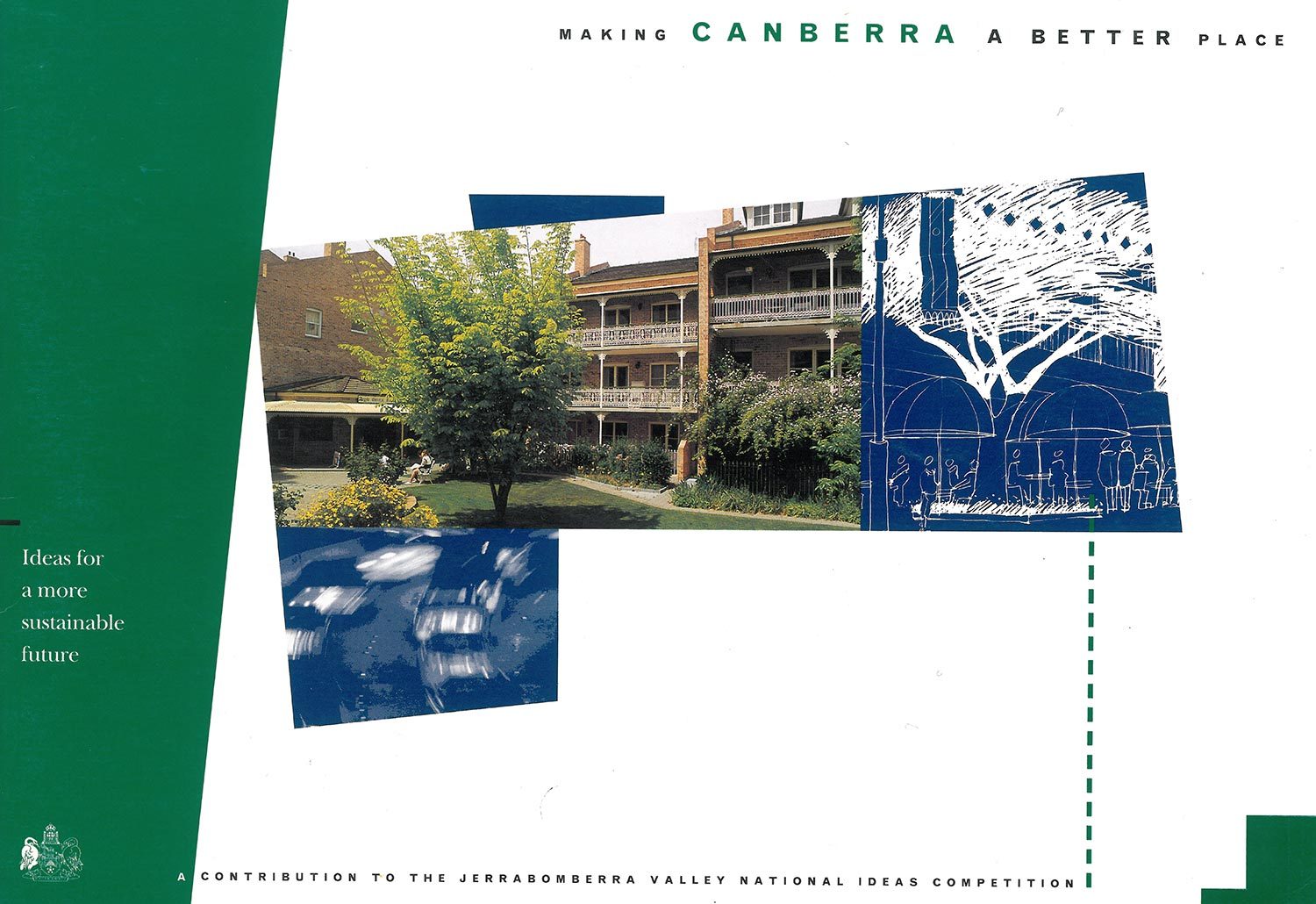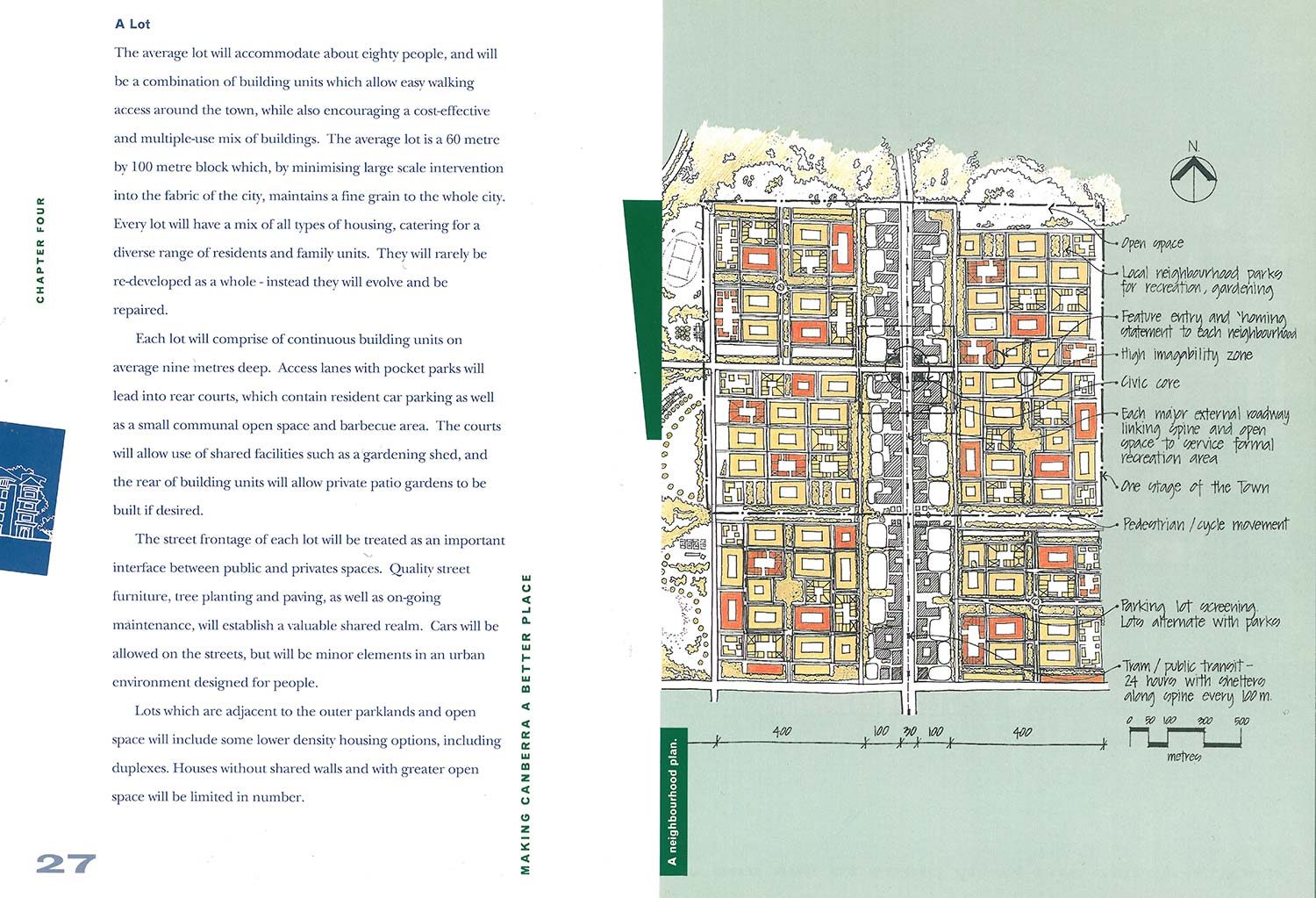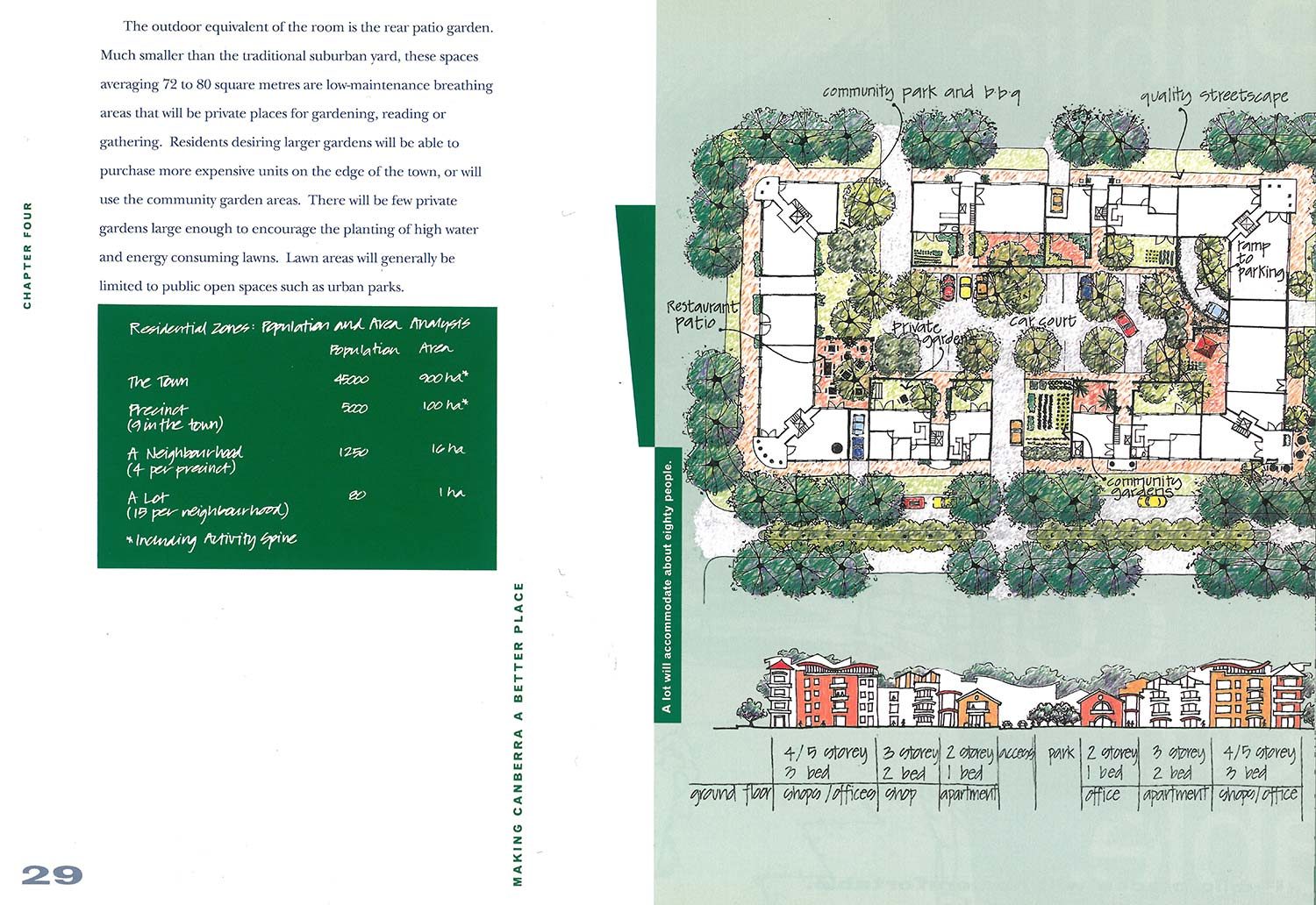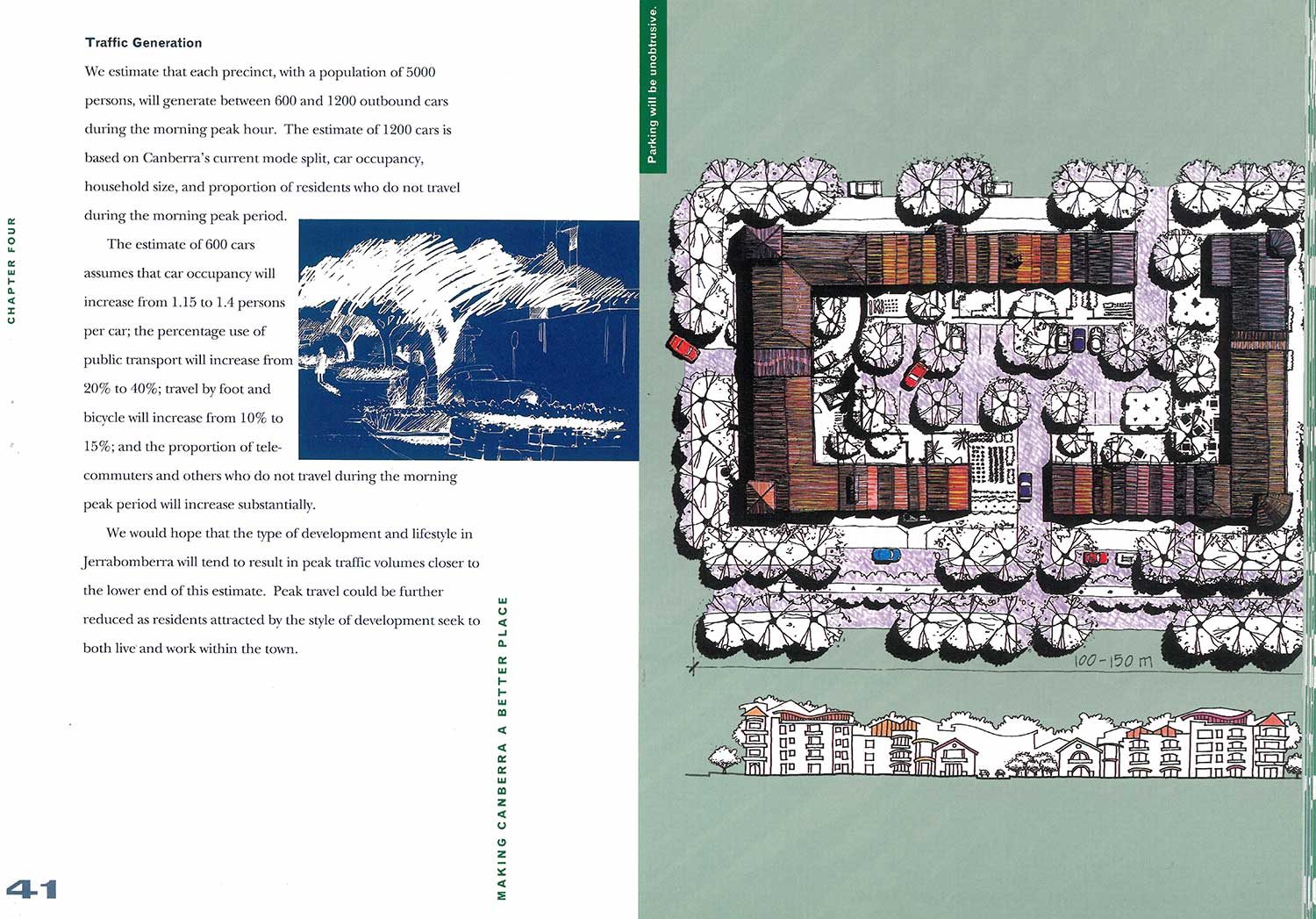Despite its initial visionary plans, Canberra over time has become a low density city lacking vibrancy and mixed-use centres. It has not fulfilled the contemporary goals of a city combining work, live and play with a low carbon footprint. A series of collaborative design workshops with experts and scientists led to a strategy for an environmentally sustainable new living city in southern Canberra. The city plans feature innovative planning for stormwater recycling, energy usage and alternative transport for the next millennium. A linear city was proposed which followed a light rail transit line and was built one sustainable neighbourhood at a time. The city evolved from studies regarding ideal sizes for living spaces, public spaces and community infrastructures. A city of 55,000 people was proposed, built in 2,400 person neighbourhoods, preceded by the light rail corridor. Innovations included worm farm and green compost recycling built into apartments, and agricultural plots within walking distance of every part of the main street.
